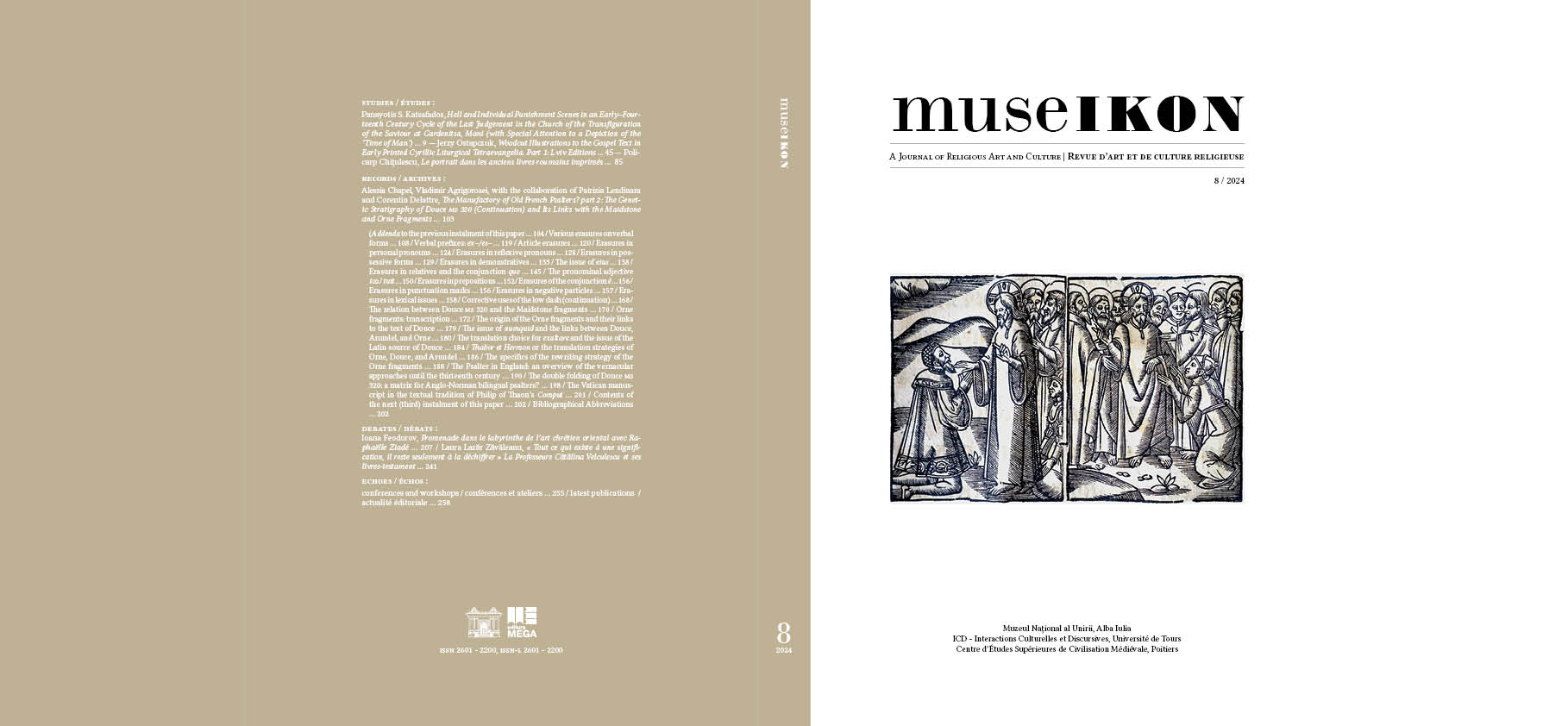Le portrait dans les anciens livres roumains imprimés.
Portraiture in ancient Romanian printed books.
Author(s): Policarp ChițulescuSubject(s): Christian Theology and Religion, History, Language studies, Language and Literature Studies, Law, Constitution, Jurisprudence, Fine Arts / Performing Arts, Cultural history, History of Church(es), Essay|Book Review |Scientific Life, Review, Bibliography, General Reference Works, Visual Arts, Theoretical Linguistics, Studies of Literature, Comparative history, Diplomatic history, Economic history, Ethnohistory, History of ideas, Local History / Microhistory, Social history, Modern Age, Theology and Religion, Comparative Studies of Religion, Religion and science , Morphology, Lexis, Historical Linguistics, Comparative Linguistics, Romanian Literature, Eastern Slavic Languages, 18th Century, 19th Century, Biblical studies, Systematic Theology, Pastoral Theology, Eastern Orthodoxy, Cultural Essay, Book-Review, Canon Law / Church Law, Translation Studies, Theory of Literature, Source Material, Sociology of Religion, History of Religion, History of Art, Phraseology, Stylistics
Published by: Muzeul National al Unirii Alba Iulia
Keywords: portrait art; Romanian printing press; St. Paisius of Neamţ; woodcut;
Summary/Abstract: The painted, engraved, or sculpted portrait is an attempt to immortalize a person and preserve their memory. Often, portraits served both didactic and aesthetic purposes, particularly in religious texts. In Orthodox books, portraits typically depicted saints rather than individuals contemporary with the time of the book's publication. It is exceedingly rare for an Orthodox book to include the portrait of a person who was alive at the time of publication or who had passed away relatively close to that date. While the practice of including portraits of individuals associated with a book was common in the West, it is a notable exception in the history of Romanian engraving and printing tradition. In this study, we have sought to identify the individuals and volumes printed in the Romanian Lands up to the nineteenth century in which such portraits appeared. We have also examined the motivations behind the inclusion of these portraits, whether engraved in wood or brass. This research was inspired by the portraits of Elder Paisios of Neamţ († 1794), printed in books by his disciples. We will analyze these representations of the great hesychast and then explore several other portraits we have identified in Romanian books thus far.
Journal: Museikon. A Journal of Religious Art and Culture / Revue d'art et de culture religieuse
- Issue Year: 2024
- Issue No: 8
- Page Range: 85-98
- Page Count: 14
- Language: French

